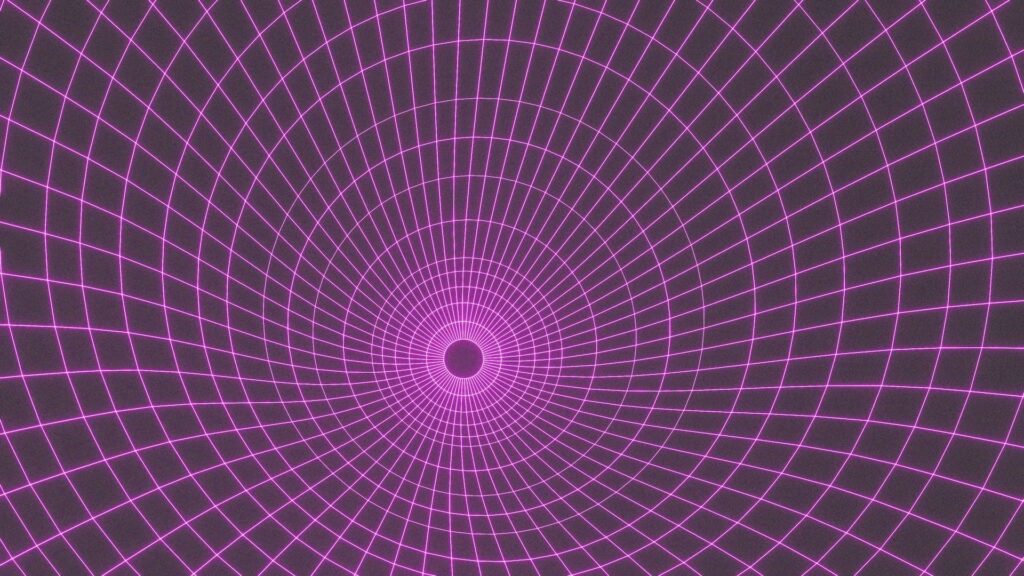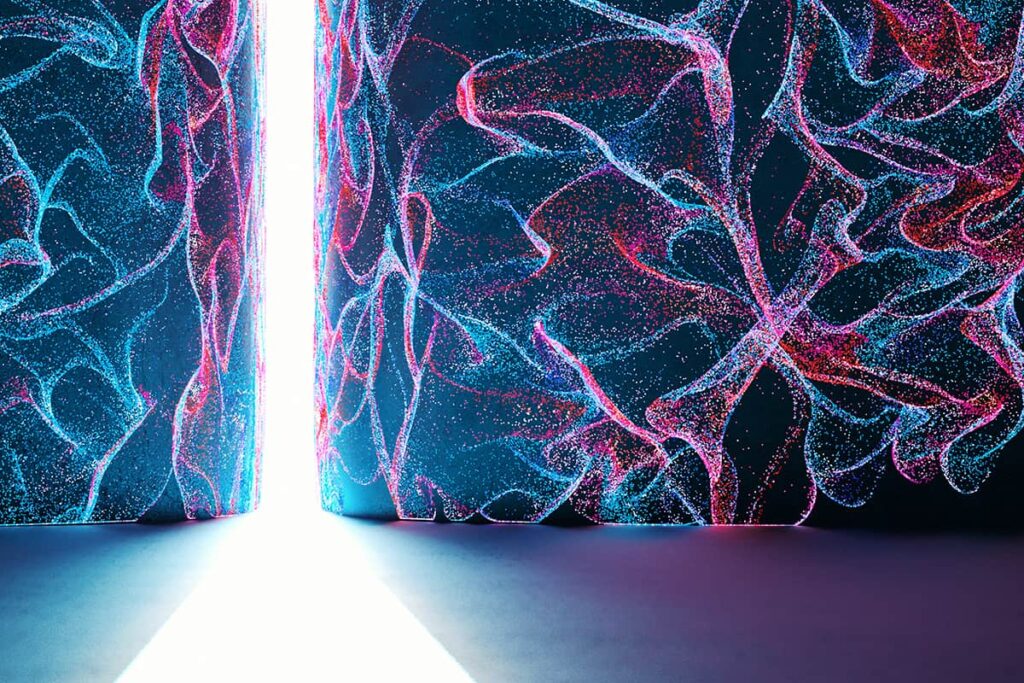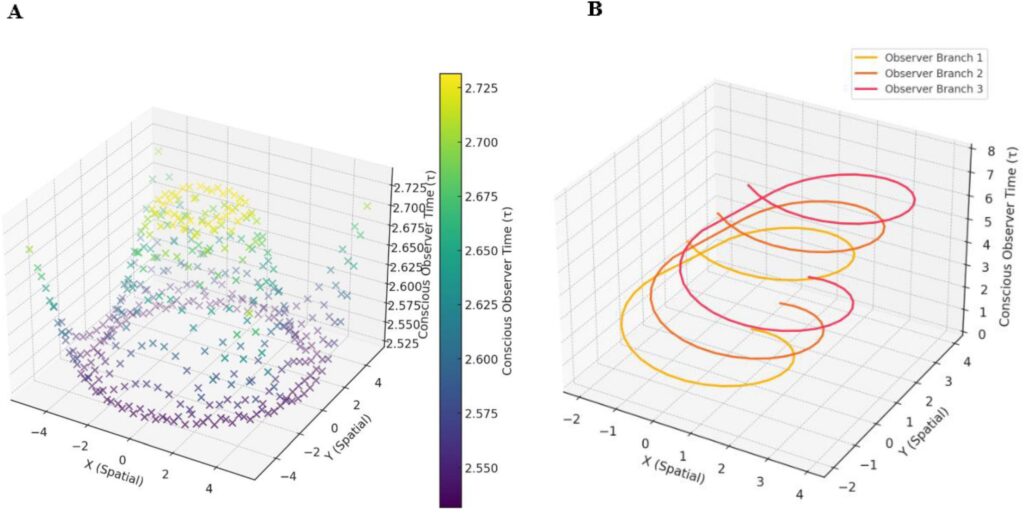You’ve probably heard this story before: Imagine a cat locked inside a box with a radioactive atom. If the atom decays, it triggers a device that kills the cat. If it doesn’t decay, the cat stays alive.
So, is the cat dead or alive? Well, according to quantum mechanics, it’s both alive and dead at the same time.
This strange idea is called “superposition.” It’s only when someone opens the box to check that the cat’s fate is decided, whether it’s alive or it’s dead. This thought experiment, created by physicist Erwin Schrödinger in 1935, points to a big mystery in science.
And it raises an even bigger question: If observing something makes it real, what does that mean for us as observers?
This is known as the “measurement problem,” and it’s one of the most puzzling questions in physics. Scientists have debated it for almost 100 years. Most physicists think that humans aren’t needed for the outcome; robots or even simple machines can make the same thing happen.
The universe, they say, doesn’t care if we’re watching. But some new theories are challenging that idea, suggesting that our consciousness might actually play a part in shaping reality.
These ideas mix physics with philosophy in a really wild way, and we’re about to dive into that mystery.
Contents
The Measurement Problem: Quantum Mechanics’ Great Mystery

At the heart of the “measurement problem” is a pretty simple question: What exactly counts as a measurement?
In the world of quantum mechanics, physicists study tiny particles like electrons. These particles can be in multiple states at once, a concept called superposition.
For instance, an electron might be traveling down different paths at the same time.
But when an experimenter places a detector at the end of one path, something interesting happens: when the electron hits the detector, it “chooses” a single path. Its superposition collapses into one definite state.
Dr. Eric Cavalcanti, a physicist at Griffith University, explains this process.
He says that when the electron hits the detector, it causes a chain reaction, ionizing atoms and creating an electrical current that we can measure.
For most scientists, this is where the story ends: the measurement is just a physical interaction, and it doesn’t need a conscious mind to make it happen.
Dr. Magdalena Zych, a researcher at Stockholm University, agrees. She compares the human eye to a detector. When photons hit your retina, it’s no different than photons hitting a machine. There’s no need to involve consciousness.
For many physicists, the universe just has a certain “randomness” that we can’t change, and that’s something we have to accept.
Wigner’s Friend: A Paradox of Perspectives

This approach works fine in the lab, but it doesn’t quite clear up all the weirdness. Things get even stranger when we start thinking about one observer watching another observer. This is where the famous Wigner’s Friend paradox comes in.
Picture this: your friend Alice is in a sealed lab, doing a quantum experiment, maybe measuring an electron’s spin. From her point of view, the superposition collapses, and she sees a clear result. She writes it down in her notebook. To Alice, reality is now locked in.
But what about you? You’re standing outside the lab.
According to quantum mechanics, you have to treat Alice and her entire lab as one big quantum system. So, from your perspective, Alice is now in a superposition, too.
She could be “seeing the electron’s spin as up” or “seeing it as down.” She’s stuck in this quantum haze until you open the door and look. When you do, everything collapses into one state.
Here’s the problem: Alice says reality collapsed when she measured the spin, but you say it collapsed when you observed her. So, who’s right?
Dr. Cavalcanti co-authored a 2020 paper in Nature Physics that tested this paradox, and the results suggested that the “facts” of an experiment might be subjective. Different observers could have different, equally valid realities. This opens the door to a universe where the observer isn’t just a passive bystander but an active part of the whole thing.
How QBism Puts You Back in the Driver’s Seat
If reality can be subjective, maybe we’ve been looking at quantum mechanics all wrong. One interpretation that takes this idea seriously is called QBism, or Quantum Bayesianism.
QBism offers a pretty radical shift in how we think about things. Instead of saying that quantum theory describes the objective world, it suggests that it’s more like a “user’s manual” for reality.
In QBism, a quantum state isn’t some fixed property of a particle “out there.” It’s actually just a reflection of your personal belief about that particle.
When you measure something, the wave function doesn’t physically collapse. Instead, your belief about the system updates based on the new experience.
This helps solve the measurement problem because, in this view, the collapse isn’t a physical event but just an update of information in your mind.
This idea is powerful because it explains why reality seems to depend on the observer. According to QBism, each of us experiences our own version of reality. We’re not just discovering a pre-existing world; we’re actively participating in creating our experience of it.
The N-Frame Model: Is Consciousness Shaping Reality?

QBism puts the observer’s beliefs at the heart of quantum physics. But there’s an even bolder theory that takes it a step further. It suggests that it’s not just our beliefs, but our actual consciousness that plays a role in shaping reality.
This is the idea behind the “N-Frame model,” proposed by Dr. Darren Edwards, a cognitive psychologist at Swansea University. He’s working to connect the psychology of the observer with the physics of the quantum world.
Dr. Edwards argues that, in psychology, the observer isn’t just a passive recorder of events—our expectations and context actively shape what we experience. He thinks something similar happens in quantum physics.
In his N-Frame model, consciousness is an active player in wavefunction collapse. In this view, consciousness bridges the gap between the quantum world of possibilities and the concrete, classical world we see. It’s what turns the “maybe” of superposition into the “is” of a definite outcome.
What makes this theory so interesting is that it’s testable. Dr. Edwards predicts that a person’s focused, conscious thoughts could actually influence how a superposition collapses. While these effects would be very small, they could potentially be measured.
This brings the idea out of philosophy and into the world of experimental science. If it’s proven, it could mean that understanding the deepest mysteries of physics might require understanding the nature of consciousness itself.
To help clarify these different views, here is a simple breakdown:
Mainstream Physics
QBism (Quantum Bayesianism)
N-Frame Model
What is a quantum state?
An objective description of a system’s potential properties.
A subjective catalogue of an agent’s personal beliefs about a system.
A description of quantum potentiality that consciousness actualizes into reality.
What is a measurement?
A physical interaction with a device that collapses the wave function.
An action an agent takes that updates their beliefs about the world.
An interaction where a conscious observer actively participates in collapsing the wave function.
Role of Consciousness
Not a necessary ingredient. A machine can be an observer.
The “agent” is central, but it’s about belief, not a physical force.
A fundamental and active participant. It is the bridge between potential and actuality.
Is reality objective?
Yes, the underlying physical laws and outcomes are objective.
No, not in the classical sense. Reality is participatory and personal.
It is “observer-centric.” Reality is actualized depending on the observer’s interaction.
Also See: The Strange Case of the Teen Who Can Mentally Time Travel (Relive the Past and See the Future)
An Unwritten Chapter in Science
So, what does all of this mean? Can you wish Schrödinger’s cat into a different outcome? Not exactly.
These theories don’t suggest we’re living in a fantasy world where anything goes. The effects being discussed are subtle and operate at the most fundamental level of reality.
They’re also really specific. For instance, Dr. Zych looked into the idea that time itself could exist in a superposition, letting an effect happen before its cause. But this crazy scenario would only happen under extreme conditions, like having observers near a massive star.
For centuries, science has been after a “view from nowhere,” an objective description of reality that exists independent of us. But what if that’s impossible? What if reality is, at its core, participatory? The idea that consciousness shapes reality suggests that the line between mind and matter, observer and observed, might actually be an illusion.
We’ve gone from a cat in a box to paradoxes about competing realities, and now to theories that put your mind at the center of it all. As Dr. Cavalcanti puts it, the current state of physics is that “we have many options, but there’s no consensus on what the right answer is.”
The debate is far from settled. We’re living in a time where the deepest questions are still open. And the idea that consciousness shapes reality is a tantalizing frontier still waiting to be explored, a new chapter in the story of science.